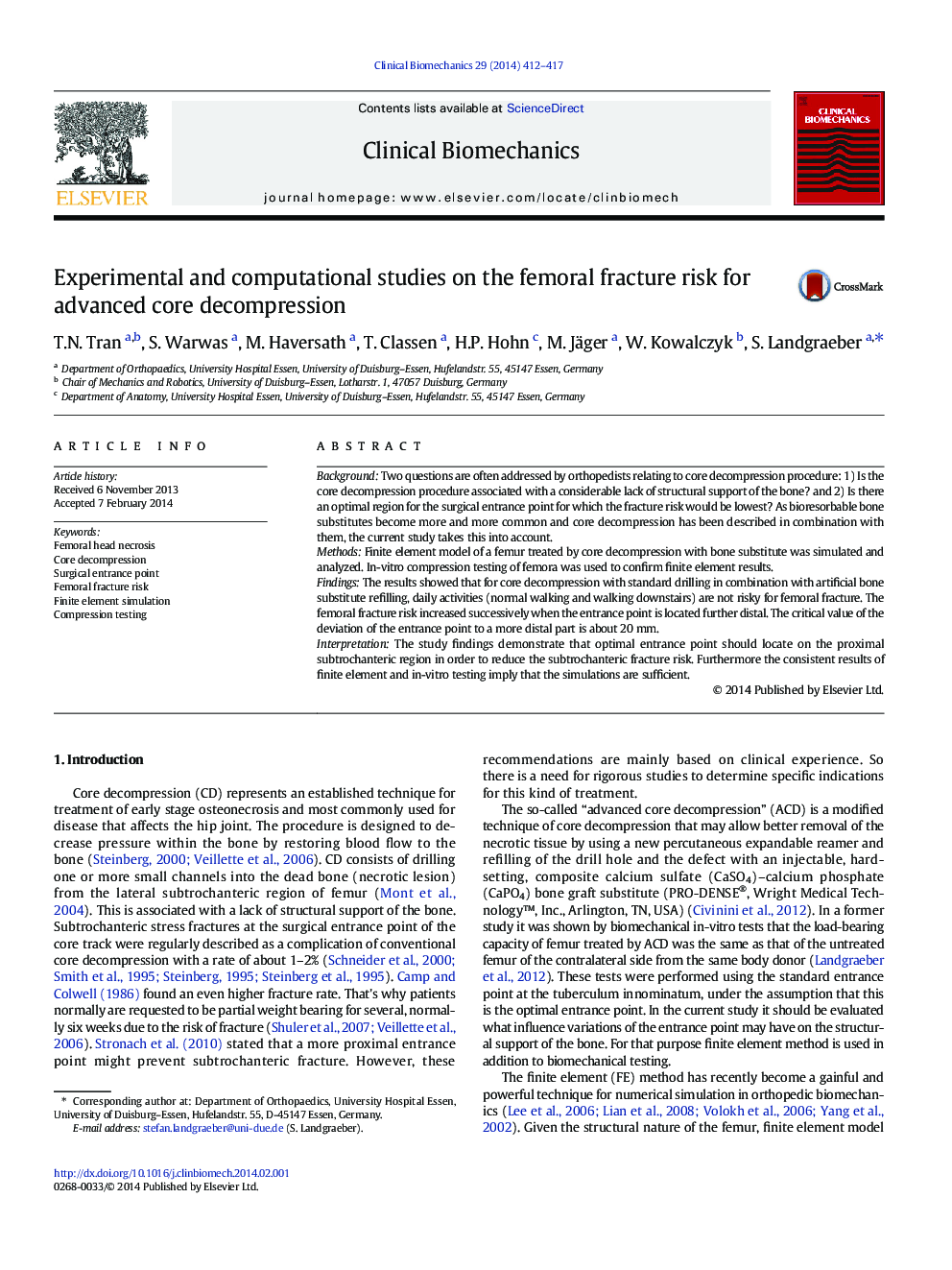| Article ID | Journal | Published Year | Pages | File Type |
|---|---|---|---|---|
| 6204849 | Clinical Biomechanics | 2014 | 6 Pages |
BackgroundTwo questions are often addressed by orthopedists relating to core decompression procedure: 1) Is the core decompression procedure associated with a considerable lack of structural support of the bone? and 2) Is there an optimal region for the surgical entrance point for which the fracture risk would be lowest? As bioresorbable bone substitutes become more and more common and core decompression has been described in combination with them, the current study takes this into account.MethodsFinite element model of a femur treated by core decompression with bone substitute was simulated and analyzed. In-vitro compression testing of femora was used to confirm finite element results.FindingsThe results showed that for core decompression with standard drilling in combination with artificial bone substitute refilling, daily activities (normal walking and walking downstairs) are not risky for femoral fracture. The femoral fracture risk increased successively when the entrance point is located further distal. The critical value of the deviation of the entrance point to a more distal part is about 20Â mm.InterpretationThe study findings demonstrate that optimal entrance point should locate on the proximal subtrochanteric region in order to reduce the subtrochanteric fracture risk. Furthermore the consistent results of finite element and in-vitro testing imply that the simulations are sufficient.
